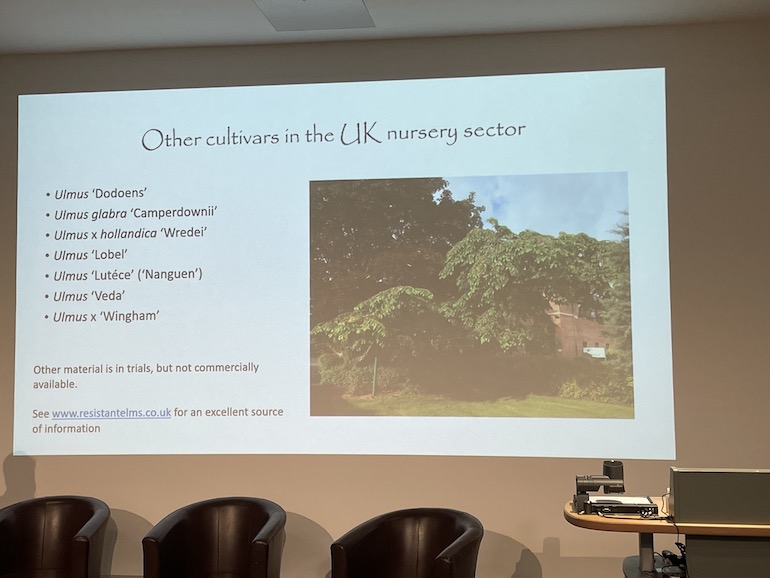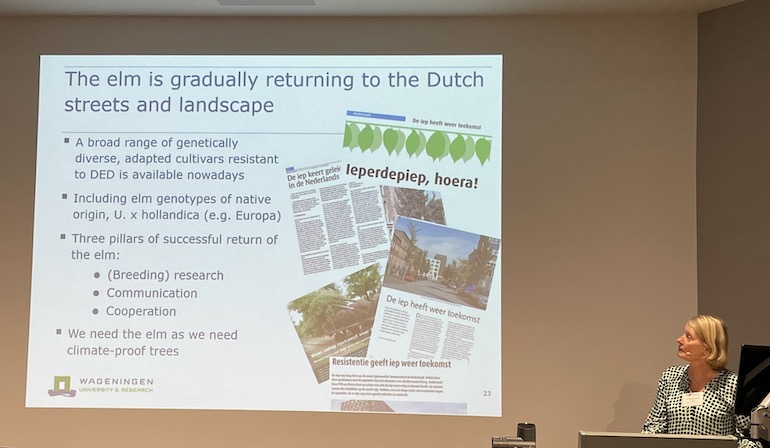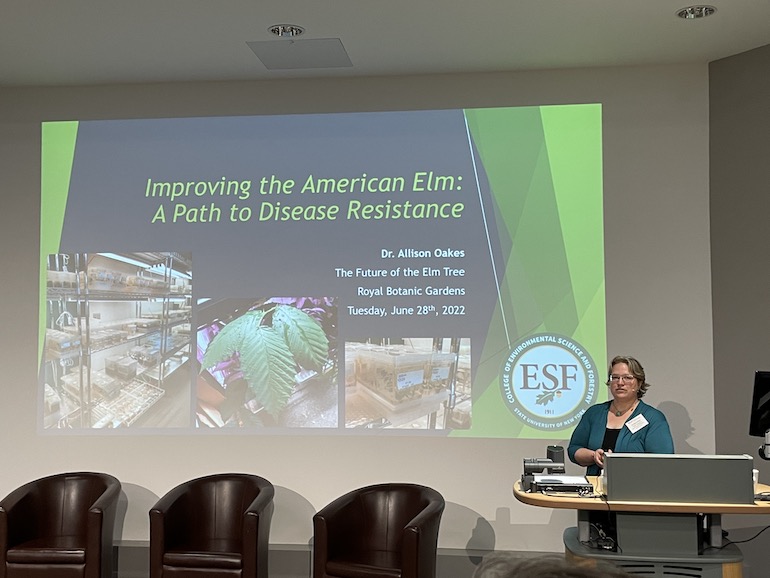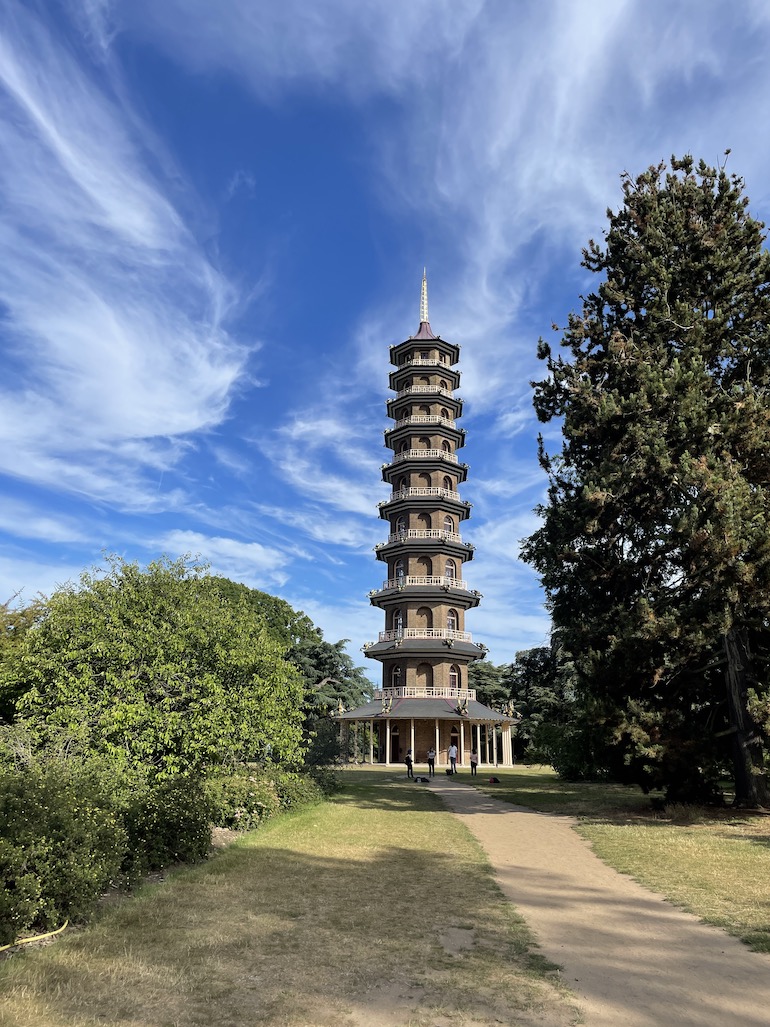What a fabulous in-person and online conference yesterday on the Future of the Elm tree hosted by the Institute of Chartered Foresters (ICF) and supported by the Department for Environment Food and Rural Affairs (Defra) and held at the Royal Botanic Gardens, Kew.
The day started with an introduction from Sir Harry Studholme who set the context and scene for the day and was followed by opening speakers Richard Deverell who is the Director of the Royal Botanic Gardens, Kew and The Rt Hon Lord Richard Benyon, Parliamentary Under-Secretary of State, DEFRA.
Throughout the day we listened to an insightful series of presentations from a multitude of speakers on a whole host of Elm initiatives with a collective goal to aid in restoring Elm to the Landscape. The sponsors of the day were Hillier Trees, Strutt & Parker and William Robinson Gravity Charity.
The first session was chaired by David Shreeve, Director at The Conservation Foundation and he talked about the great British Elm experiment (see link below). Professor Juan A. Martín from the Technical University of Madrid gave a detailed presentation on the past, present and future of Elm breeding in Spain. Dr Joan Webber from Forest Research provided us with the truth and legends about Dutch Elm Disease. Dr Andrew Hirons from Myerscough College showed us the hope for the future of elms with examples of resistant elms in the urban environment.












The second session chaired by Karen Russell focused on developing disease resistance with presentations from Professor Clive Brasier of Forest Research on the life cycle and epidemiology of DED and the need for further research into the resistance mechanisms in xylem and feeding wound plus genetic engineering approaches. Dr Joukje Buiteveled of the Centre for Genetic Resources in the Netherlands shared the results of elm making a come back in the Netherlands. Plus Dr Allison Oakes from the State University of New York’s College of Environmental Science and Forestry shared her research which has facilitated the exciting process of genome sequencing of American Elm.










The third session was chaired by Geraint Richards and looked at practical experience with the first presentation by Tim Stafford on Elm propagation techniques and the wide variety of methods he has tried with varying degrees of success. Andrew Brookes shared the importance of planting resistant elm cultivars in the conservation of the White-letter Hairstreak butterfly (Satyrium w-album). Finally, Dr Leila Pinchot gave us insights into the American Elm resistance breeding and restoration programme and the hugely successful survivor Elm database.






The final session was a discussion with panellists Professor Richard Buggs who is the Senior Research Leader in plant health at Royal Botanic Gardens, Kew, Professor Nicola Spence Chief Plant Health Officer, Defra, Dr Alec Gunner and Matthew Bennison. It led to a lively series of questions from the floor and online about moving forward and where do we go from here. The day was rounded off by a positive affirmation around the future of elm by Sir Harry Studholme followed by a self-guided tour of Kew Gardens to see the Pagoda, tree top walk and a few of the other amazing trees within the grounds.


My 10 take-home points from the day
- The need for the construction of a reference genome for Ulmus minor
- Continued and expanded collaboration between all interested groups worldwide to aid with knowledge sharing and research into elm genomics, elm breeding, resistant elm establishment, remaining elm management and elm landscape restoration
- Importance of the link with the mycobiome and its role in resistance
- Incorporation of beneficial endophytes to plant production
- Further funding and support for elm breeding programs to increase the production of more resistant Elms at all stock sizes to make them more accessible
- Planting of more resistant Elms of all stock sizes in both rural and urban environments and exploration of funding sources to aid with this
- Further research into the interaction between the elm genotype and Ophiostoma novo ulmi
- The need for an integrated approach underpinned by understanding and research
- Production of improved guidance on available resistant elms and their characteristics, features and optimum site growing conditions
- Continue to search for resistance among surviving UK native or naturalised elms
Useful resources
- Resistant Elms (David Herling)
- Hilliers – Ulmus New Horizon
- Forest Research Dutch Elm Disease (DED)
- Kew saving our native Wych Elm
- Future Trees Trust – Where are we with Elm?
- Ancient Tree Forum – The Preston Twins
- Brighton Elm treesBrighton & Hove National Elm Collection
- Woodland Trust on Elms
- Wildlife Trust on Elms